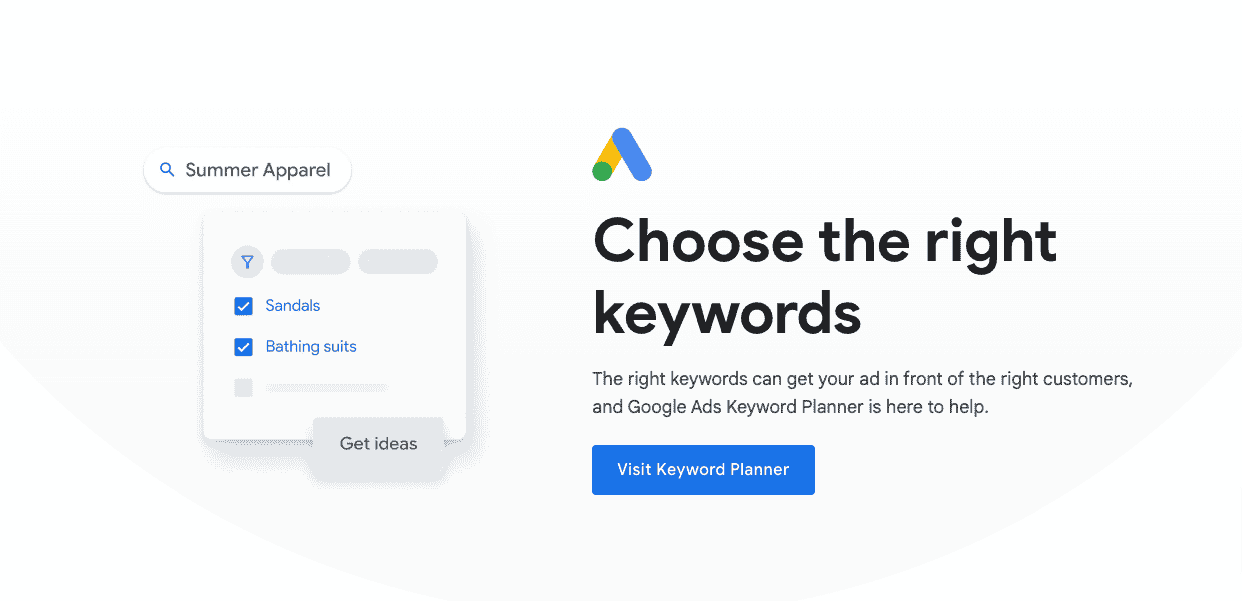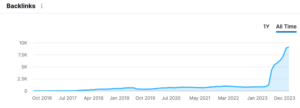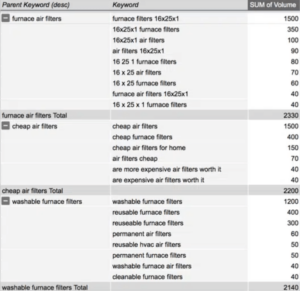Three little letters mean so much if you’re in digital marketing. You know what I’m talking about: SEO.
Better known as search engine optimization, SEO dictates where your website ranks and if it’s heavily visible online or completely invisible. You won’t get any traffic worth writing home about if your site is on the second page of results, and your sales? They won’t be pretty.
Here, we’ll talk specifically about eCommerce SEO.
All eCommerce brands want to shoot to the top of the SEO rankings, but it’s a complicated journey.
In this blog post, we’ll analyze the key components of eCommerce SEO, and dive into strategies, tools, and examples so that you can rank your eCommerce website better.
Let’s get started.
Table of Contents
Key Takeaways
- eCommerce SEO determines how visible your website is online. While there are hundreds of ranking factors, targeting the main eight will help your site rise in the ranks.
- Focusing on website structure, keyword research, on-page and off-page SEO, and technical SEO will help your site achieve new heights, bringing in more leads and sales.
Understanding eCommerce SEO
As an eCommerce store owner, you’ve got to get acquainted with SEO, as it’s key to helping your website rank shoot up. But, to do that, you’ve got to understand SEO, so let me make it easier for you.
Search engine optimization, or SEO, determines where your website ranks in the search engine results pages (SERPs). Every time you do an online search, the websites that appear on the first (and second, etc.) page are not there randomly; far from it.
Their rankings are often the result of strategic efforts made by a skilled search engine optimization company, which uses proven techniques to improve visibility, drive traffic, and enhance online authority.
Google and other search engines choose which sites rank whereby various ranking factors.
There are upward of 200 ranking factors Google will prioritize, which I know seems like an impossible number to keep track of. Obviously, the more ranking factors your site has, the higher your rank, but focusing on the following factors will put your eCommerce website in a better position:
- Brand signals or the reputation of your brand.
- Quality of links, including internal, outbound, and backlinks.
- Social signals refer to how much engagement you get when you post on social media.
- Technical SEO, like schema markup, tells search engine crawlers what your site’s content is. Mobile friendliness and site loading speed also go under this umbrella.
- The quality of the user experience or UX.
- Domain age and authority, with more established sites being ranked better because they have a longer-standing reputation.
- Keyword optimization is how well your website uses the keywords you’ve identified.
- Content quality, which Google highly prioritizes. Content should be relevant and engaging.
Read also: 19 eCommerce Best Practices to Win Customer Confidence
Key Components of eCommerce SEO
Now that you’ve gotten a feel for the basics of eCommerce SEO, I want to dive a lot deeper into the components that make up your ranking factor.
Changing and improving these is the only way to help your site rank higher.
Site structure
Imagine someone handed you a path map and asked you to get from Point A to Point B. You could make sense of the map contents and find a clear path guiding you forward, right?
I mention that because it’s a lot like how your website structure works.
Google and other search engines use web crawlers, which are sometimes called spider bots. The whole responsibility of a crawler is to peruse your website and determine what its hierarchy or structure is.
If the crawler has a map, aka a clear structure, it can navigate through the site and delineate landing pages, the about page, the contact page, etc.
The crawler then reports this information back to Google or whatever the search engine is, influencing where you’ll rank. The murkier your site structure is, the more dangerous it is to rank your site well because who knows what it could contain? It’s like going through a haunted house without a flashlight.
Fortunately, there are plenty of tools out there for testing your website architecture to determine where you fall short. Next, you can enlist these best practices:
- Build a sitemap in XML and HTML format. The former is what crawlers use, so all the URLs on your website should only be presented in plain text. If you support your eCommerce website on that CRM, WordPress has plugins for building XML and HTML sitemaps for you.
- Simplify your URLs, cutting out all the extraneous letters, numbers, punctuation, and other junk that looks fishy. You can rely on WordPress to automatically produce a usable, SEO-friendly URL. Other CMS tools also offer this capability.
- Use top-down navigation to make your website easier to use. Your customers and leads will also appreciate this small touch.
Read more: 12 Great Landing Page Optimization Practices — The Ultimate Guide
Keyword research
Targeting the right keywords is a huge part of SEO success. I wrote an entire guide dedicated to eCommerce keyword research and optimization that you should really check out if you haven’t already. Here’s an abridged version.
Your keyword strategy will use a mix of short- and long-tail keywords. Short-tail keywords are briefer but more generic, whereas long-tail keywords have more specificity. Compare “dental service for a sore tooth” versus “dental service for the sore tooth in Chicago,” and you’ll see what I mean.
Besides that, you must also select relevant keywords. Tools like Google Keyword Planner and SEMrush will help you identify the keywords your target market has searched for or could search for.
If you don’t have an in-house SEO expert, collaborating with an SEO reseller can streamline your keyword research and optimization process, ensuring you target the right search terms with professional precision.
Once you’ve identified them, you must determine the difficulty of the keywords. In other words, how much search volume do they get?
A keyword with a lot of search volume is too popular and will be difficult to rank for, but one without much search volume won’t impact your SEO. You’ll rank for a keyword no one cares about. The right difficulty is in between, with a rate of 30% to no more than 70%.
Remember that keyword research is always in flux, meaning that your customers will have changing preferences, and the keywords in your industry, in general, can be different. You must be ready to research a new set of keywords when the occasion calls for it.
On-page SEO
Next, there’s on-page SEO, which refers to the changes made on your website (hence the name on-page). These small tweaks can overall make a huge impact on your ranking, so here are some to add to your to-do list and why they matter. If you’re working with an SEO agency, these are often the first areas they’ll address::
- Insert keywords: You’ve found great keywords, so now it’s time to use them. You can insert keywords in your website’s titles, URLs, headers, metadata, alt data, and body content. However, the key is to use them with some restraint, so maybe one keyword every 100 to 300 words. If you do more than that, you’ll end up keyword stuffing, which overuses the keyword. Google punishes keyword stuffers.
- Optimize your website for mobile: With 98% of people relying on mobile devices for their internet browsing, your eCommerce site must be optimized for mobile users. Here’s how to do that:
- Improve your website loading speed.
- Compress your images.
- Limit the use of pop-ups or forego them altogether.
- Prioritize clear, easy-to-use navigation.
- Make your site responsive by selecting appropriate themes.
- Improve content relevance: If you wrote a bunch of content without doing a lick of keyword research before, you don’t have to dump all your hard work. Instead, retool the old posts and triple-check that your new content calendar is catered to your target market.
- Add metadata: Metadata appears on web pages, videos, and images. You can incorporate it into your website by writing meta descriptions for blog and website content and adding meta tags to other content. The point is to solidify your website hierarchy further.
- Build internal links: Anyone can slap-dash a few internal links together and call it a day. The right way to add internal links for SEO is to link to relevant pages and articles on your site that will genuinely help the reader by providing more information. You should also write clear anchor text rather than “click here.”
- Optimize your images: Reduce your image size via compression so the quality is still good, but your site can load faster. Add metadata in the form of alt tags to your images that describe what the image is about.
- Fix your URLs: Yes, this is your reminder to go back and make your URLs SEO-friendly. Insert your keywords in the URL, remove junk data from the HTML, and make it more legible using hyphens.
Read also: The Secrets to Writing a Killer Product Description
Off-page SEO
Once you’ve mastered on-page SEO, it’s time to turn your attention to off-page strategies. As you probably guessed from the name, these SEO measures don’t directly involve your website, although you still get a ranking boost if they’re done right. They are:
- Link building: Building reputable links is the key to a healthier SEO rank. Anyone can buy links from the marketplace, but that’s how your website ranks sink even further. True link building, especially when guided by experienced enterprise SEO companies, requires these kinds of measures:
- Guest blogging
- Working with an influencer
- Relationship building
- Publishing high-authority, sharable content
- Reviews: Reviews are one of your best forms of social proof, so you should want them for that reason alone. Besides that, reviews also indicate that you’re a trustworthy business, which Google and other search engine crawlers pay attention to when deciding where you rank.
- Directories: Joining reputable directories is a great way to bolster your brand and gain more backlinks.
- Google Business profile: You should also claim and optimize your Google Business profile. Google will look at the information in your profile and compare it with the NAP data (name, address, phone number) in the various directories you joined and those you placed on. If everything matches, it helps your SEO.
Technical SEO
Although not the easiest to master, technical SEO elements such as website hierarchy, indexability, mobile optimization, and site speed are critical for building a stronger website that will rank favorably.
We’ve touched on all those points except indexability, so here’s a closer look.
Indexability refers to how easily a search engine can index your website. That’s important, considering your site can’t appear in search results unless and until it’s indexed.
Are you ready to get your site indexed? I hope so because here are some tips coming at you:
- Cut all your nofollow links.
- Build an XML sitemap if you haven’t already.
- Review no-index tags.
When finished, you can submit your website for indexing through Google Search Console.
Read more: A Brief Guide on Mastering Competition Keywords
Advanced Strategies for eCommerce SEO
You’ve built an eCommerce SEO strategy, but why stop there?
The following strategies are more advanced but will drive results.
Content marketing
The backbone of your SEO campaign is, without a doubt, content. I’ve already talked about the importance of slotting keywords into your content, but let’s investigate that a bit more.
You can use keywords in the content title, meta description, and subheads in addition to the body content. Don’t forget to add the keyword to at least one alt image tag.
The key to successful content marketing is producing content your audience wants to read. The keyword research you should have done will help you determine the best content direction, as will your audience feedback and competitor research.
Make sure to broaden your content, producing everything from blogs to whitepapers, videos, checklists, infographics, webinars, podcasts, and eBooks.
Don’t miss my guide on eCommerce content marketing, which includes pointers, tips, and strategies to really master this important part of your SEO. You can also explore comprehensive SEO tools like SeoProfy to track your content performance and identify new opportunities for organic growth.
Link building
Yes, it’s back to link building, and that’s only because it’s such an important part of furthering your SEO goals. As a SaaS link building agency, we’ve seen firsthand how the right strategy makes all the difference.
I already discussed the basics, but how about some best practices to fortify your backlink efforts?
Here they are.
- Review your competitor’s backlinks to see which tactics have worked for them and what caliber of backlinks they’ve attracted.
- Build skyscraper content, which entails reviewing the best content in your industry or niche and then creating unique content that beats it. Find all the sites that link to the original content and request that they add yours instead.
- Check for broken or inactive links periodically (maybe once every quarter), replacing or removing them as necessary.
User experience (UX)
All elements of your SEO campaigns must be about the user experience. As an eCommerce business, if you can’t get your prospective customers onto your website, you’ll find it impossible to make any sales.
UX does more than affect how much traffic your website gets. It also influences your SEO ranking. Here are some UX strategies to implement for your eCommerce website if you haven’t already:
- Produce clear, actionable CTA buttons with anchor text that tells the user what happens when they click.
- Only post relevant content on your website.
- Build a more responsive web design that’s optimized for mobile users.
- Improve the navigation so it’s easy to use and intuitive.
- Restructure your information architecture so crawlers can easily decipher the contents.
Competitor analysis
Staying abreast of what your competitors are up to is a critical part of SEO success for eCommerce websites. At this stage, many teams pair competitor insights with sustainable backlinks for online stores.
Done responsibly, it strengthens authority and supports product and category pages. Remember, their missteps can guide you to success faster, and the types of backlinks they build can help influence your own.
A competitor analysis can also identify audience segments you need to target, keywords in your industry or niche you might have missed, content types that resonate with your target market, and communication styles they’re receptive to.
Read also: Winning in a Competitive World — eCommerce Marketing 101
SEO Tools and Resources
Throughout your SEO journey, you can lean on an assortment of tools to help you strengthen your weak spots and make your eCommerce website even better.
Keyword research tools
There are more than enough keyword research tools on the market, so you should have your pick whether you need a free option or can afford paid software.
Names like SEMrush, Google Keyword Planner, Moz Keyword Explorer, KWFinder, Google Trends, Jaaxy, and Keyword Snatcher will not steer you wrong.

How do you use these tools? It’s simple.
Type a related keyword or keywords, select your location, and see what recommendations the tool gives you. Some tools, such as Google Keyword Planner, let you share your website URL to use it as a keyword.
Of course, you still have to determine the keyword difficulty for every term, and you may have to do that independently of the tool, but you’ll have a great jumping-off point.
Competitor analysis tools
Digging deep into your competitors for the purposes of SWOT analyses and other research is as simple as trying SpyFu, SEMrush, Ahrefs, BuzzSumo, Owler, or Sprout Social.

Using Sprout Social as an example, you can input the names of the competitors you’re most closely watching and then monitor them and their related networks. In conjunction with features like keyword filters, total engagement, impressions, and positive sentiments, you’re on the road to solidifying your SEO standing.
Performance tracking tools
And I’m sure you want to dig deep into your analytics to track your rate over time, right gradually? Right! My favorites for that job are Google Analytics, SEOQuake, and Google Search Console.
Using a tool like Google Search Console for analysis couldn’t be easier. Access your Google Search Console tool, then click the Search Results tab. Clicking Average Position and Average CTR includes those KPIs on your report.
Read also: Mastering SEO for Dropshipping — Strategies to Drive Traffic and Revenue
Examples of Brands that Successfully Implemented eCommerce SEO
Before you wonder why you should pour so much time, effort, and, yes, money into eCommerce SEO, allow me to show you these few examples.
They’re from eCommerce businesses just like yours that, with the power of SEO, rose to new, previously unimaginable heights.
Van Dyke & Bacon
Duckpin, a digital marketing agency, paired with shoe brand Van Dyke & Bacon to improve their SEO. The eCommerce brand didn’t have much of an organic presence, but Duckpin was about to change that.
Amazing things happened by optimizing VDB’s product pages (including URL cleanup), producing quality content, and building backlinks.

VDB started at only 50 clicks per day and shot up to 400 per day, a boost of 700%. Its year-over-year sales, which had stagnated at 30,000, spiked by an amazing 73,000 to average 125,000 sales.
Filter King
The eCommerce air filter brand Filter King used several SEO strategies to achieve success. For instance, the team behind the brand performed keyword research with keyword bucketing or mapping to build keyword-centric category pages.
Additionally, they used internal linking for two reasons: a better site architecture and to build out silos, like so:

From there, they focused on link building, eventually achieving 1,000 clicks per day and bringing in $460,000 in revenue.
Conclusion
So, now you see how the ongoing nature of SEO requires the regular need for updates and adjustments. Once you achieve a good rank for your eCommerce store, you must continue tweaking your strategy to maintain your spot.
Implementing the strategies discussed today will help you improve your sales and online visibility!
EngageBay is an all-in-one marketing, sales, and customer support software for small businesses, startups, and solopreneurs. You get email marketing, marketing automation, landing page and email templates, segmentation and personalization, sales pipelines, live chat, and more.
Sign up for free with EngageBay or book a demo with our experts.
Frequently Asked Questions (FAQ)
1. What are the most important SEO factors for eCommerce sites?
Focus on page speed, mobile optimization, backlinks, image optimization, internal linking, keyword optimization, and schema markup to make a rank-ready eCommerce website.
2. How often should I conduct an SEO audit for my eCommerce store?
SEO audits are valuable ways to identify weak spots in your strategies, so plan to do them at least twice a year.
3. What is the impact of mobile optimization on eCommerce SEO?
Mobile optimization affects how accessible your site is, which, in turn, alters how visible it is. Failing to optimize hurts your reputation and organic traffic.
4. Can social media influence my store’s SEO?
Not directly, no.
That said, building your brand and reputation on social media can certainly impact how you rank, so always make sure you’re connecting meaningfully with your audience.
